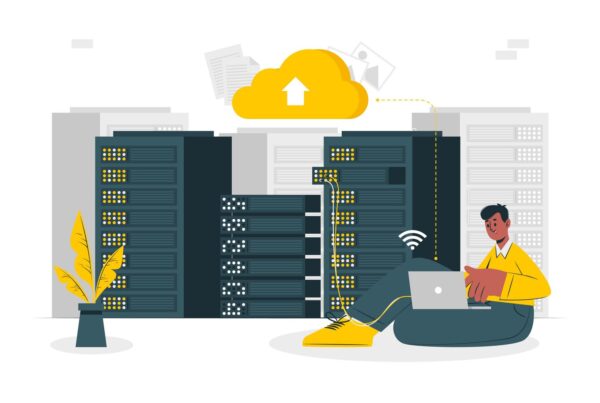Is Green Web Hosting The Future of The Web? Count On It. Internet Future: Green Web Hosting
The world wide web runs on electricity, though we don’t usually think about it. But the fact is, without electricity you wouldn’t be reading this. You’d hunker down in front of the fireplace and read the newspaper by the dim light of a lamp fueled by whale oil. Sound like fun?
It wasn’t. It was actually pretty boring compared to today’s instant information available only on the W3. If it happens any where – from Teheran to Terre Haute, it spreads virally across the digital landscape in seconds. That news bit also gobbles up electricity like nobody’s business.
So, is green hosting the wave of the future web? Yes. And if you aren’t riding the crest of that wave, you’ll be left behind in the digital dust. An energy munching web site is sooo “last millennium.”
The Ever Expanding World Wide Web
Some facts about green hosting:
- There are more than 125 million web sites on line today.
- Each day, 6,000 new web sites launch, carrying with them the dreams and visions of web-preneurs looking to become the next Amazon.
- Each web site sits on a server that requires electricity to run it and cool it. That requires a lot of electricity.
- The electricity bill for a successful web host would make a grown man cry. It’s HUGE. Many web hosts pay thousands of dollars monthly to keep their servers juiced.
- The consumption of electricity used by web hosts doubled in just five years.
- With the advent of Web 2.0 features like videos, VoIP, streaming TV and other “must-haves,” the web will only expand the demand for more and more electricity.
- Experts suggest that energy consumption by web hosts will continue to double every five years and studies show these web pros are actually being conservative. Some “green” bloggers suggest the amount of electricity consumed by web hosts will double every 30 months.
- Energy consumption to power the W3 grows exponentially, doubling then quadrupling and so on. The demand for power from web hosts will increase at a phenomenal rate.
- As the world wide web grows in both size and features, web site owners will require increasing amounts of bandwidth to avoid long download times.
What Are Web Hosts and Why Do They Gobble Up Energy?
Conduct a Google search of web hosts and see what pops up.
You’ll get 149,000,000 search results for web hosts. Now, not all of these SERP links are for actual web hosts. Some are for reviewing sites (that use web hosts), blogs about web hosts (that use a web host to get their blogs out to the masses) and even SERPs links to sellers, resellers and re-re-sellers of hosting services.
Hosting is a commodity on the web. You or I can buy space from a web host and open up our own hosting company. The mother host provides all the tools and support you need to build your own hosting company in the basement office. (The one that floods occasionally. Ooops.)
A web host can be a kid down the street or it can be a huge, physical plant with chipheads tending to racks of servers, customer support taking calls from subscribers and office people tending to routine business matters – like paying the electric company.
What’s a server? Well, in simplest terms, a server is not much more than a humongous hard drive in a box. Your web site (or future web site) resides on one of these server hard drives, along with hundreds of other web sites. Today, server disk space is measured in terabytes.
What’s a terabyte? A measurement of bits and bytes on steroids. A terabyte is the equivalent of 1,000 gigabytes. More dramatically, a terabyte equals 1,000,000,000,000 bytes or 10 to the 12th power of bytes.
That brand new computer you just bought MIGHT have a 500 gigabyte hard drive. A server has dozens of terabytes of storage. It also has tons of RAM (128 gigabytes of RAM isn’t unusual) so that the server can deliver the bandwidth required for fast downloads of all the sites stored on that server.
In other words, web hosting companies consume a lot of electricity with rack upon rack of servers all sucking up electricity from the grid.
Facebook, alone, employs 30,000 servers as of October, 2009 and that number grows daily as more and more of us connect through this social media site. Amazon employs thousands of servers. Microsoft, Verizon and all of your other favorite sites employ thousands of servers strung together in arrays,
In other words, there are millions of servers storing terabytes of information available to you on the W3. Yep, even your little blog gobbles up electricity.
Green Hosting
So, even though we may not think about energy consumption when we stake a claim to some digital real estate, build and launch web site, we are adding to the demand for more and more electricity.
Now, along comes green hosting – hosting companies that employ “green” technology to lower the demand for electricity generated by coal- and gas-fired electricity generation plants. These businesses recognize that green hosting is inevitable as energy costs rise and we continue to pump tons of air-borne pollutants into the atmosphere every day.
Things ain’t going to get better, folks, unless our corporate culture does an about face and stops drawing down available energy. Major cities, like Los Angeles and Phoenix, already experience rolling blackouts as parts of the energy grid are shut down for a while. New York City broadcasts “please turn off your air conditioners” on the hottest summer days and brown-outs are almost routine.
Green hosting is leading the way in how U.S. businesses conduct on-line business by employing green sources of energy to power their servers.
A green host doesn’t add to the demand for more electricity from traditional sources. Instead, these far-sighted companies employ new technology – solar power, wind power, deep core earth energy, hydro-electric (where available) and bio-fuels that can be regenerated with another harvest of corn.
But there’s a lot more to web hosting than just storing web sites on gigantic hard drives. It’s not just about ROM. It’s also about RAM, which translates into the speed at which your web site interacts with site visitors. It better be fast. Studies reveal that 90% of us will sit through a 10-second download while only 10% will sit through a 30-second download. We’ve become that impatient.
From a site owner’s perspective, that stat translates into a loss of 80% of your prospects in that 20-second download window. So you want more RAM, more bandwidth and unfettered access to the server’s CPU and other shared assets – server parts you share with other sites.
Hosts employ the latest in fiber optic technology, they boost RAM and deliver quick downloads even quicker. Green web hosts do this without further straining the energy system that we rely on to log on, watch TV and cook dinner by using non-traditional resources to power up your web site whenever a site visitor stops by.
Cool It
In addition to delivering more bandwidth to you and your site visitors, and easier access to the server’s CPU, servers need to be cooled.
Even your PC pumps out a lot of heat and heat is the enemy of all those circuit boards, CPUs and other electronics inside the box. Now multiply that by thousands – tens of thousands of servers all humming along pumping out heat. To keep these servers happy, they need to be cooled.
Traditional hosts add to the demand for more energy by cooling servers with cold air. The server room in a hosting company is kept cool – so cool you could probably store sides of beef in there if the racks of servers didn’t take up so much space. That cooling requires energy and plenty of it.
Green hosts, once again, employ state-of-the-art tech to cool those thousands of servers. They use cold water, flushed through a water-tight system, to cool the server room, lessening the demand for more and more cold air from the local coal-burning energy plant.
Make a Statement: We’re Green
Getting a little recognition on the W3 is hard, even in a niche market (especially in a niche market). You have less than 10 seconds to convince a site visitor to stick around long enough to learn about the quality of your services, your products or your message. Web surfers are jagged out on information overload. If they don’t see what they want to see on your home page or a landing page, they bounce.
So, making a statement about your corporate culture and your business’ core values has to happen in the blink of an eye. Visitors will never even see the “About Us” page if you don’t create a good impression – in 10 seconds!
An emblem or banner proclaiming that you employ green hosting makes an immediate statement about your on-line business. It says you care about the environment. It says you care about the future of the planet and our children and grandchildren who will populate Earth 25, 50 or 100 years from now.
That “green” badge of honor also bestows a cache of cutting edge tech-iness. You get it. Your on-line business uses green hosting because you recognize the importance of this fledging movement.
There aren’t a lot of green hosts even today. However, more hosts will soon recognize that green is the only way to go. And those few green hosts out there now?
They’re making a statement about their business culture – a statement that passes on to your business when you display a green host emblem or banner.
Who said it isn’t easy being green? Today, green hosting makes a statement about you and your business – a positive statement.
And with less than 10 seconds to make a good first impression, that “green” host emblem goes a long, long way in making the right statement quickly.
Yep, we get it. We’re green. Stick around and learn more.








